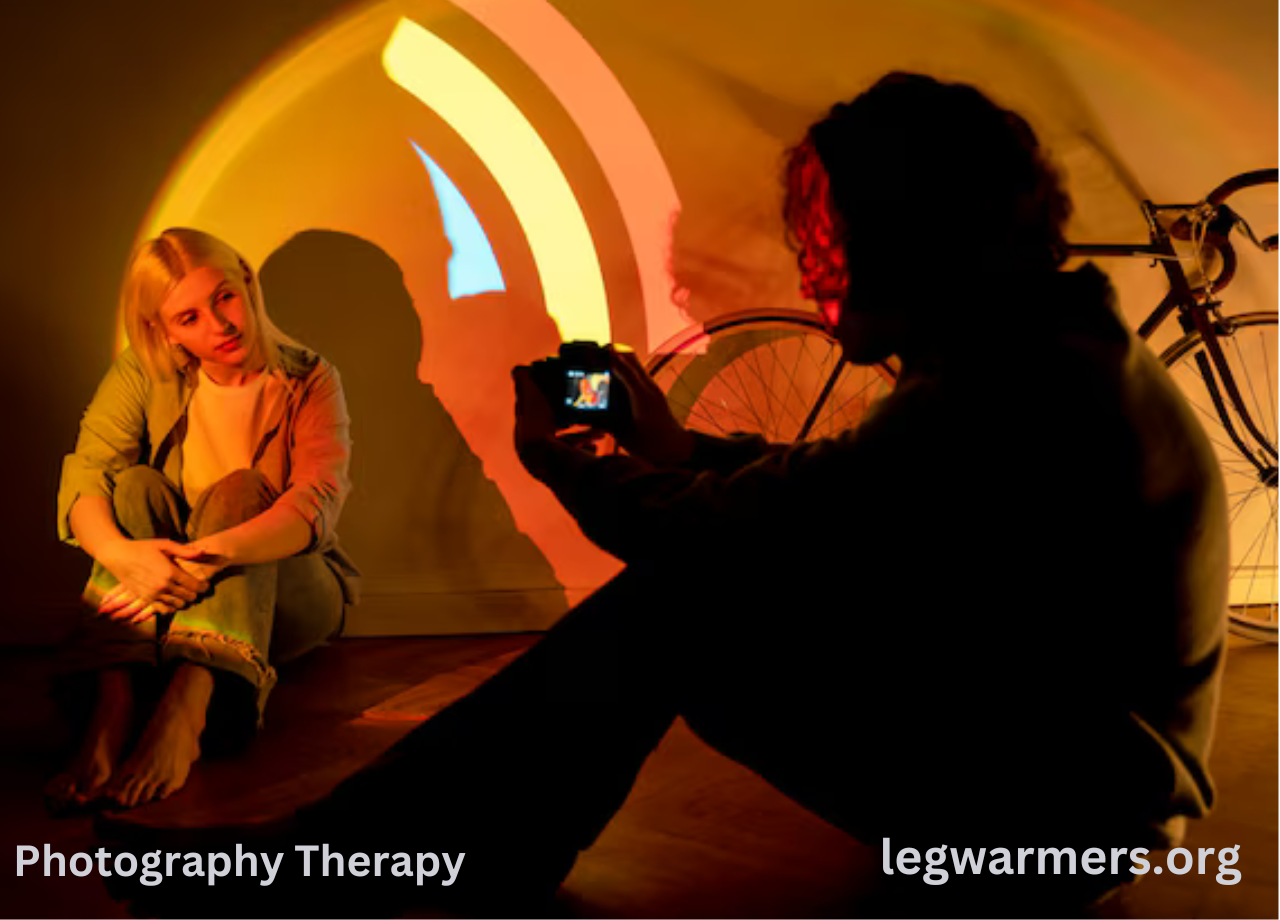Introduction
Photography has long been a way for people to capture moments, tell stories, and express themselves visually. But did you know it can also be a powerful tool for mental and emotional healing? Photography therapy is an innovative approach that combines the art of photography with therapeutic practices, offering a unique way to explore and express emotions. In today’s fast-paced world, where stress and anxiety are common, photography therapy provides a calming outlet that promotes self-discovery and personal growth.
What is photography therapy?
Photography therapy, also known as phototherapy, involves using photography as a means of self-expression and emotional exploration within a therapeutic context. It can be done individually or in a group setting, with guidance from a trained therapist. Unlike traditional therapy, which often relies on verbal communication, photography therapy allows individuals to express themselves visually, offering a different perspective on their thoughts and feelings.
Origins of Photography Therapy
The concept of using art as therapy isn’t new, but photography therapy specifically has gained recognition over the past few decades. It was developed as therapists began to recognize the power of imagery in helping clients communicate and process their experiences.
How It Differs from Traditional Therapy
Traditional therapy focuses on verbal communication, where clients talk about their feelings, experiences, and challenges. Photography therapy, on the other hand, uses images as the primary form of expression. This can be particularly beneficial for individuals who find it difficult to articulate their emotions with words.
The Benefits of Photography Therapy
Photography therapy offers a range of benefits, both emotional and psychological. Here are some key advantages:
Emotional Expression
Photography allows individuals to capture what they might struggle to put into words. This visual expression can reveal deep-seated emotions and thoughts, providing insight into the person’s inner world.
Stress Reduction
Engaging in photography can be a relaxing and meditative activity. Focusing on the process of taking pictures helps shift attention away from stressors, promoting a sense of calm and mindfulness.
Enhancing Self-Awareness
Through the process of selecting and reflecting on photographs, individuals can gain a deeper understanding of themselves. This can lead to greater self-awareness and personal growth as they explore aspects of their identity and emotions that they may not have fully acknowledged.
The Connection Between Creativity and Healing
Creativity plays a significant role in mental health, providing an outlet for emotions and a way to process complex experiences. Photography, in particular, offers a unique blend of creativity and observation, allowing individuals to engage with the world around them in a meaningful way.
Why Photography is an Effective Medium
Photography is accessible to nearly everyone and doesn’t require advanced skills to begin. It provides an immediate and tangible result, allowing individuals to see their work and reflect on it. The process of capturing images can also be highly personalized, making it a versatile tool in therapy.
How Photography Therapy Works
Photography therapy typically involves several steps, guided by a therapist who helps the individual explore their thoughts and emotions through images.
Basic Principles and Techniques
Photo-taking: Clients are encouraged to take photographs that resonate with their emotions or experiences.
Reflection: After capturing images, clients discuss their photographs with the therapist, exploring the emotions and thoughts associated with them.
Analysis: Together with the therapist, clients analyze the themes and patterns in their images, leading to deeper insights and understanding.
Role of the Therapist
The therapist’s role is to facilitate the process, helping clients interpret their photos and understand the underlying emotions. They provide a safe space for clients to explore their feelings and guide them through the therapeutic journey.
Types of Photography Used in Therapy
Different types of photography can be used in therapy, depending on the individual’s needs and preferences.
Portrait Photography
Portraits can be powerful tools for reflection. Taking or viewing portraits can help individuals explore their identity, self-image, and relationships with others.
Nature Photography
Nature photography is often used to promote relaxation and mindfulness. Capturing scenes from nature can have a calming effect and help individuals connect with the world around them.
Abstract Photography
Abstract photography allows for more interpretative and imaginative expression. It can be used to explore complex emotions that are difficult to define or articulate.
Who Can Benefit from Photography Therapy?
Photography therapy is a versatile tool that can benefit a wide range of individuals, from children to adults, and those dealing with various mental health challenges.
Different Age Groups
Photography therapy can be adapted for different age groups, making it accessible to children, teens, and adults alike. Each group may use photography in different ways, but the core benefits remain the same.
Specific mental health conditions
This form of therapy can be particularly effective for individuals dealing with anxiety, depression, trauma, and other emotional or psychological issues. It provides a non-verbal outlet for processing difficult experiences and emotions.
Photography Therapy for Children and Teens
Children and teens often struggle to express their emotions verbally. Photography therapy offers a creative and engaging way for them to explore their feelings and experiences.
Benefits for Younger Individuals
For younger clients, photography can be a fun and interactive way to engage in therapy. It encourages them to express themselves in a non-threatening way and can help build self-esteem and confidence.
How It Helps with Emotional Development
Photography therapy can aid in emotional development by helping children and teens identify and articulate their emotions. It provides a visual language that can bridge the gap between their internal experiences and external expression.
Photography Therapy for Adults
Adults can also greatly benefit from photography therapy, particularly those dealing with life transitions, stress, or mental health challenges.
Addressing adult-specific issues
Adults may use photography therapy to explore themes such as identity, relationships, and personal growth. It can also be a valuable tool for working through past traumas or navigating significant life changes.
Case Studies and Examples
Several case studies have shown the effectiveness of photography therapy in helping adults cope with issues like grief, anxiety, and depression. For example, a study involving veterans with PTSD found that photography therapy helped them process their experiences and reduce symptoms.
Photography Therapy in Group Settings
Group photography therapy offers a collaborative environment where individuals can share their experiences and learn from each other.
Benefits of Group Therapy
In a group setting, photography therapy fosters a sense of community and support. Participants can share their photographs and insights, leading to deeper connections and mutual understanding.
How group dynamics influence outcomes
The dynamics of the group can enhance the therapeutic process by providing different perspectives and encouraging open discussion. Group members often find comfort in knowing they are not alone in their experiences.
Photography and mindfulness
Mindfulness is the practice of being present in the moment, and photography is a natural extension of this practice. Taking photos requires focus and attention, which can help individuals develop a mindful approach to life.
How Taking Photos Can Enhance Mindfulness
When individuals focus on capturing a moment through photography, they are naturally practicing mindfulness. This can help reduce anxiety and increase awareness of the present moment.
Techniques to Incorporate Mindfulness into Photography
Slow down: Take time to really see and experience your surroundings before taking a photo.
Focus on details: Look for small, often overlooked details that capture the essence of the moment.
Reflect: After taking a photo, spend time reflecting on why you chose that particular subject and what it means to you.
The Role of Reflection in Photography Therapy
Reflection is a critical component of photography therapy. It involves analyzing and discussing the photos taken during therapy sessions.
Analyzing Photos for Deeper Meaning
Clients are encouraged to look beyond the surface of their photos and explore the deeper emotions and thoughts they evoke. This analysis can lead to profound insights and understanding.
Journaling and discussing photographs
Journaling about the photos taken can further enhance the therapeutic process. Writing about the images helps solidify the emotions and thoughts they represent, providing a deeper level of reflection.
Practical Tips for Starting Photography Therapy
If you’re interested in exploring photography therapy, here are some practical tips to get started:
Getting the Right Equipment
You don’t need expensive equipment to begin. A smartphone or a basic camera will suffice. The focus should be on the process, not the quality of the images.
Setting Goals and Intentions
Before starting, it’s helpful to set goals and intentions for what you want to achieve through photography therapy. This could be exploring a particular emotion, working through a past experience, or simply finding a creative outlet.
Challenges and Limitations of Photography Therapy
Like any therapeutic approach, photography therapy has its challenges and limitations.
Potential Obstacles
Some individuals may feel self-conscious about their photography skills or find it difficult to connect with the process. It’s important to remember that the focus is on expression and exploration, not on creating perfect images.
How to Overcome Them
Overcoming these challenges involves patience and an open mind. Working with a supportive therapist can also help individuals feel more comfortable and engaged in the process.
Conclusion
Photography therapy is a powerful tool that combines creativity with emotional healing. Whether you’re dealing with stress, anxiety, or simply looking for a new way to explore your emotions, this unique form of therapy offers a fresh perspective. By capturing moments through the lens, you can gain deeper insights into yourself and the world around you. As photography therapy continues to grow in popularity, its potential to help individuals heal and grow is becoming increasingly recognized.
FAQs
Can anyone start photography therapy on their own?
While it’s possible to explore photography as a form of self-care, working with a trained therapist can provide deeper insights and guidance.
What kind of camera do I need for photography therapy?
A basic camera or smartphone is sufficient. The emphasis is on the therapeutic process, not the quality of the images.
How does photography therapy differ from art therapy?
Photography therapy specifically uses photographs as the primary medium for expression, while art therapy can include various forms of visual art.
Is photography therapy effective for serious mental health issues?
Photography therapy can be beneficial for individuals with serious mental health issues, but it should be used in conjunction with other therapeutic approaches.
Can photography therapy be done online?
Yes, many therapists offer photography therapy sessions online, allowing clients to share and discuss their photographs virtually.
You Can See Latest Updates On: Leg Warmers



